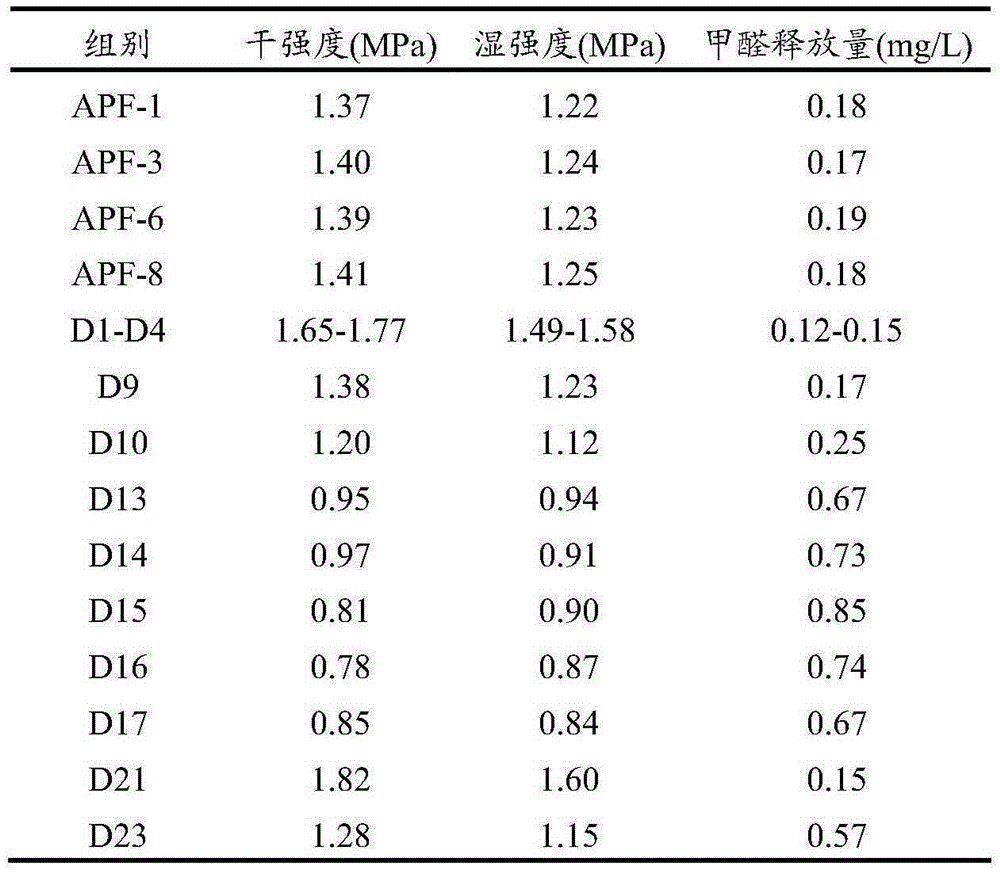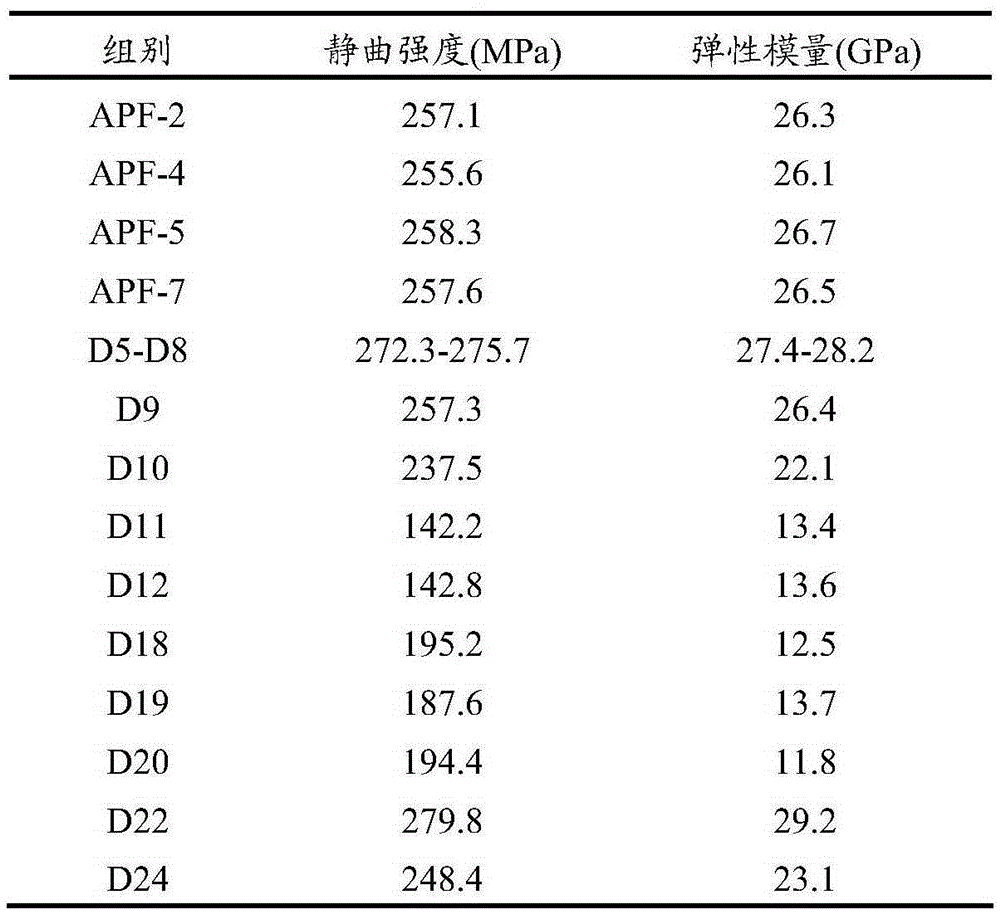A kind of nano-alumina modified phenolic resin adhesive and its preparation method and application
A nano-alumina, phenolic resin technology, applied in the direction of polymer binder additives, non-polymer binder additives, binder additives, etc. The effect of reducing formaldehyde emission, improving performance, broad market prospects and application value
- Summary
- Abstract
- Description
- Claims
- Application Information
AI Technical Summary
Problems solved by technology
Method used
Image
Examples
Embodiment 1
[0043] (1) 188 grams of phenol, 50 grams of mass fraction are 50% sodium hydroxide aqueous solution, 46 grams of water and 240 grams of mass fraction are 37% formaldehyde solution to join in the mechanically stirred reactor that has included reflux condenser, thermometer , heated up to 85°C under mechanical stirring, held for 50 minutes, and cooled to 75°C to obtain reactant I.
[0044] (2) in the reactant I of step (1), according to mass ratio 1.2:1:0.8, add 52 gram mass fractions altogether in three batches and be 37% formaldehyde aqueous solution and 25 gram mass fractions be 50% sodium hydroxide aqueous solution, The temperature was raised to 85° C., and the reaction was kept for 120 minutes to obtain reactant II.
[0045] (3) When the reactant II viscosity of step (2) reaches 400 centipoise, stop the reaction, and add 10 grams of sodium hydroxide aqueous solution and 8 grams of urea with a mass fraction of 50%, stir evenly, and cool to 40° C. to obtain Reactant III.
[...
Embodiment 2
[0048] (1) 194 grams of phenol, 72 grams of mass fraction are 40% sodium hydroxide aqueous solution, 40 grams of water and 250 grams of mass fraction are 37% formaldehyde solution to join in the mechanically stirred reactor that has included reflux condenser, thermometer , the temperature was raised to 92°C under mechanical stirring, the reaction was held for 40 minutes, and the temperature was lowered to 80°C to obtain reactant I.
[0049] (2) in the reactant I of step (1), according to mass ratio 1.1:1:0.9, add 62 gram mass fractions altogether in three batches and be 37% formaldehyde aqueous solution and 35 gram mass fractions be 40% sodium hydroxide aqueous solution, The temperature was raised to 85° C., and the reaction was maintained for 90 minutes to obtain reactant II.
[0050] (3) When the reactant II viscosity of step (2) reaches 100 centipoise, stop the reaction, and add 15 grams of mass fraction of 30% sodium hydroxide aqueous solution, 10 grams of urea, stir evenl...
Embodiment 3
[0053] (1) 48 grams of phenol, 24 grams of mass fraction are 60% sodium hydroxide aqueous solution, 8 grams of water and 68 grams of mass fraction are 37% formaldehyde solution to join in the mechanically stirred reactor that has included reflux condenser, thermometer , the temperature was raised to 80°C under mechanical stirring, the reaction was held for 60 minutes, and the temperature was lowered to 65°C to obtain reactant I.
[0054] (2) divide in the reactant I of step (1) according to mass ratio 1.5:1:0.5 and divide into three batches and add 20 gram mass fractions altogether and be 37% formaldehyde aqueous solution and 4 gram mass fractions be 60% sodium hydroxide aqueous solution , the temperature was raised to 75° C., and the reaction was held for 180 minutes to obtain reactant II.
[0055] (3) When the reactant II viscosity of step (2) reaches 200 centipoise, stop the reaction, and add 8 grams of sodium hydroxide aqueous solution and 6 grams of urea with a mass fract...
PUM
| Property | Measurement | Unit |
|---|---|---|
| particle diameter | aaaaa | aaaaa |
Abstract
Description
Claims
Application Information
 Login to View More
Login to View More - R&D
- Intellectual Property
- Life Sciences
- Materials
- Tech Scout
- Unparalleled Data Quality
- Higher Quality Content
- 60% Fewer Hallucinations
Browse by: Latest US Patents, China's latest patents, Technical Efficacy Thesaurus, Application Domain, Technology Topic, Popular Technical Reports.
© 2025 PatSnap. All rights reserved.Legal|Privacy policy|Modern Slavery Act Transparency Statement|Sitemap|About US| Contact US: help@patsnap.com


